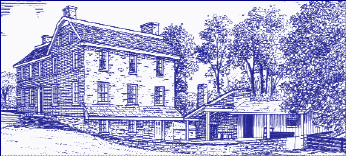|
Cannon, Earl,
Mellinger
The Thatchers
appear to have been alone for about a year, but in 1806, another family from Kentucky came
into the area. In the years prior to the Revolutionary
War of 1776, four brothers by the name of Mellinger came from Germany to America and
settled in Pennsylvania. Some of these descendants went to Kentucky around 1795. In 1806,
three brothers (John, Joseph and David), and two sisters (names unknown), then came to
Shelby County to settle on Loramie Creek, near to what is now the the town of Lockington.
Joseph was born in
Pennsylvania in 1772, John in 1774. David raised a family of ten children, with only one
of his descendants, a daughter remaining in the county by the 1880s. Joseph Mellinger was
one of the more prominent citizens of the day, active in helping to form the organization
of Shelby County, Ohio, and a member of the early Board of Commissioners (elected in
1820).
Thomas Earl (nationality
unknown) arrived that same year as well as the James Cannon family.
Some time prior to the
Revolution of 1776, a lad of fifteen found his way from Ireland to the United States. This
boy was James Cannon, who on reaching this country, became a tanner’s apprentice for about two years. He then
joined the Continental Army and served to ‘pave the way for Independence.’
Commissioned as First Lieutenant, James served part of the time under the immediate
command of General Washington. At the close of the war, he located in Sherman’s
Valley, Pennsylvania, where he married Mary Long. They moved to Ohio, settling in Franklin
in 1795, where for four years he operated a tannery. After moving to a Franklin County
farm in 1799, they then came to Shelby County in 1806.
The Cannons started in
southern Shelby County, moving to the mouth of the Loramie Creek, later on to what is now
Sidney (where James Cannon was one of the first men to help improve the land on what was
then Charles Starrett’s farm) and then
settling north of Hardin in Turtle Creek Township in 1815.
The Cannons had seven children: Abraham, Catherine, Margaret, James, Susanna, Richard M.
and Daniel. James passed away in 1828.
One of Cannon’s sons,
Abraham, stayed on Starrett’s farm, living in a one-room log cabin. When Sidney was
made the county seat of Shelby County, this log cabin would serve as a meeting place for a court house until one could be built.
Another Cannon son,
Richard, caused quite a stir while stationed as a volunteer at the Johnston Farm in Piqua
when he shot an Indian who was trying to
steal a horse. Two old horses had to be given to the Indians in apology for this act.
Richard would serve as a Justice of the Peace in the 1840s and outlive many of his fellow
pioneers, passing away at one month shy of 92 years of age in 1888.
 |
The
1820s Johnston Farm is located in Piqua, Ohio.
|
'Pioneer' segment written in
October, 1997 by Sherrie Casad-Lodge
[ Back to Pioneer Index ]
|

